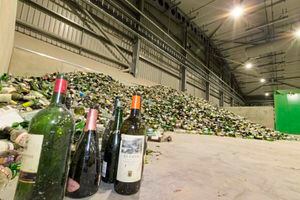What went wrong?
MY LAST column focused on how the cost of the solid waste facilities at Longue Hougue increased from £20m. to £30m. over less than three years.

I am pleased to read that the Scrutiny Management Committee are now going to review the whole capital budgeting process, but I fear they will perform a general review of the capital budgeting process rather than a review of this particular project.
Clearly something, somewhere, went seriously wrong, so I thought it might be worth considering what could have happened.
I have not spoken to anybody involved – this is purely my thoughts on the matter based on general experience.
I hope a full investigation will identify what did actually go wrong.
To explore this, we need to remind ourselves of what happened.
In 2014 the States approved a budget for the facilities of £29.5m. based on a report from the then Public Services Department.
By 2016 it became clear that the total costs of the full list of facilities would exceed the budget of £29.5m. The solution proposed by the then Public Services Department, as explained by the then minister, was to build only some of the facilities and change the way the waste strategy is implemented.
The change proposed was to shift some of the costs from capital to revenue, which is best explained by looking at kerbside collection vehicles.
Irrespective of who pays for kerbside collection vehicles, such vehicles are needed to collect our waste. With the States not now buying the fleet of vehicles, the cost of buying them falls to the individual contractors, who pass on the cost to each parish – a cost we pay each year through our parish rates. Remember this when you pay your parish rates.
To explore what may have gone wrong, we need to also consider how capital budgets are produced.
Normally it is staff who do the work to produce the budgets, probably a combination of PSD staff, who know the project, and staff from the Property Services arm of T&R (now P&R). They would ‘crunch the numbers’ to produce a budget which would have been submitted to the deputies sitting on PSD, for their approval and submission to the States.
The key question is what happened in this process for the budget to have been so far out?
The first possibility is that a higher budget was produced by staff and arbitrarily reduced by the deputies on PSD. Without hesitation, I discount this. It is possible that they may not have been rigorous enough in their challenging of the budget, but knowing the people involved I cannot believe that they would artificially reduce a budget just to get it through the States.
We are therefore left with the scenario where the budget produced by the staff was too low.
The biggest single item is the transfer station. This is where the waste is delivered and prepared and packaged for transportation to the UK.
The cost of this increased from £7.8m. to £13.1m. in two years – virtually double.
How can that happen?
The obvious possibility is that the specification increased and a bigger, or more functional, transfer station was built. This did happen to a degree – two changes occurred. But it is not that straightforward.
True, the transfer station was changed to cope with the export of food, but a separate cost of £2.4m. is identified for this so that cannot be the reason for the £5m. increase.
The other change was the size of the transfer station, which increased from 1,800m² to 3,000m². Apart from preparing food waste for export, the only change to the transfer station I could find was that the processing of glass would be in the station.
Nearly £5m. to process glass? There has to be another reason, but what? And why?
The second significant cost increase, of £4m. (from £5.8m. to £9.8m.), was described as ‘site development’. Presumably the cost of preparing the infrastructure of the site – roads etc.
How on earth can that have been underestimated by so much? It is not as though twice as many roads were needed.
One possibility is that, since the site is reclaimed land, something was discovered about the structure of the area which caused costs to increase. I think this has to be a questionable reason because the States was responsible for managing the site, which has always been earmarked for development. Therefore, the filling of the site should have been managed in a way which anticipated development – if it had not been, the implication is that somebody, somewhere, did not do a thorough job controlling the landfill.
Let’s face it, a £10m. uplift in costs from a starting point of £20m. is a significant increase – probably the worst I can recall. Somewhere one or more serious mistakes or errors of judgement were made which need to be investigated and identified – not only to ensure accountability, but also to ensure this situation does not happen again.
There are other large capital projects coming forward, such as the new schools. How can we have confidence that those budgets will be anywhere near realistic unless we know what went wrong here? Especially since the people and procedures which got the Longue Hougue budgets so wrong may be producing the schools’ budgets.
I am not trying to have a bash at civil servants. I know the pressures they are under. I am on record as being very supportive, but the difference between the original budget and the actual costs are so huge that this does need to be investigated, and the results, preferably not naming individuals, made public. Only then can the public, and other deputies, begin to have confidence in the States capital budgeting process.





